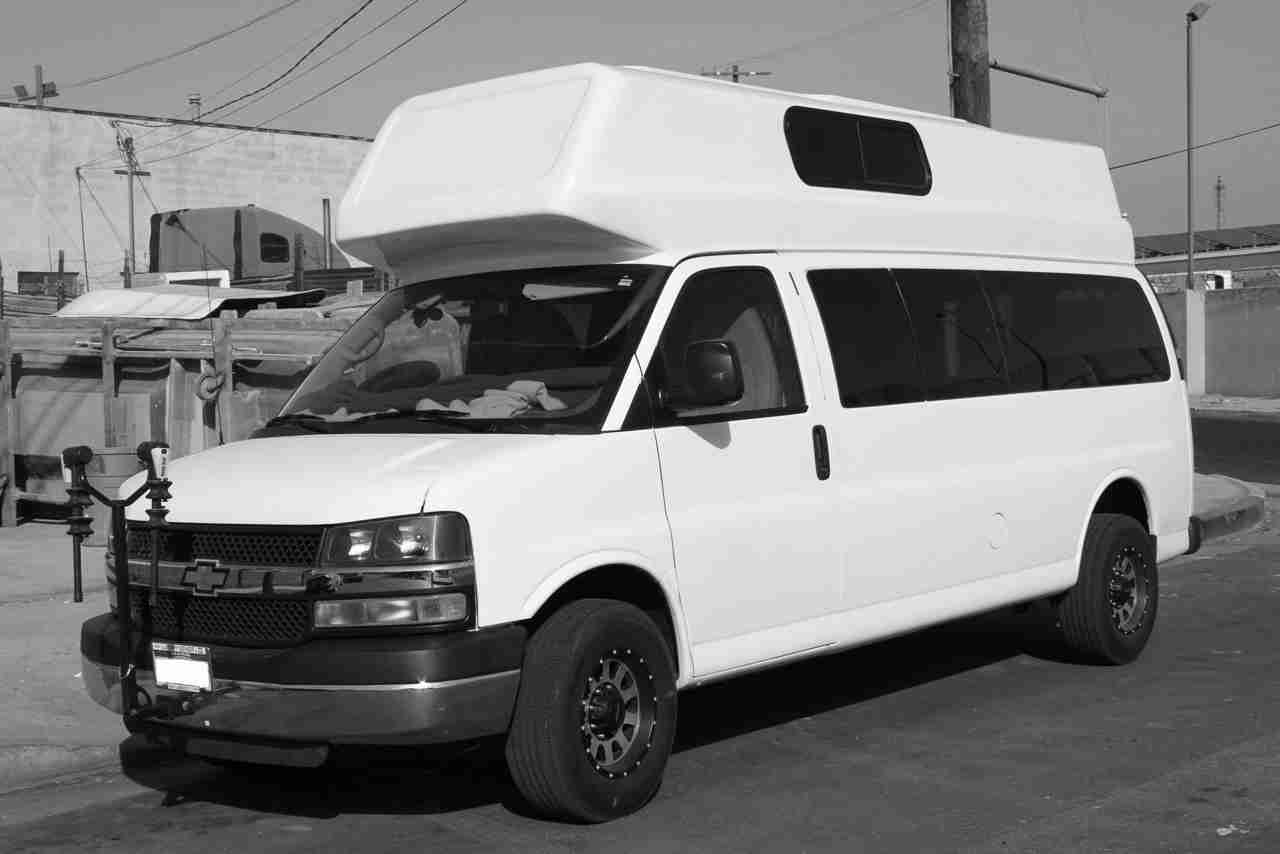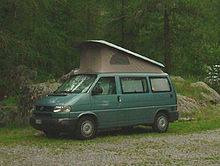Table of Contents
High roof
A high roof installed in a van can increase headroom or even make standing possible. Adding a high roof can be an expensive process but owners generally feel it to be a worthwhile investment.
An increase in frontal area can have a negative impact on MPG. An increase in sail area can make the van more susceptible to sidewinds. An increase in exterior height will reduce clearance in drive-throughs, wooded areas, etc.
OEM high roof
These Eurovans can be ordered with a factory high roof:
- 77.8” - Sprinter high roof 4)
- 75” - NV >= 2500. 76.9“ between the ribs. 6)
- 72” - Transit mid-roof
Aftermarket high roof
 The most common roof alteration for American vans is the fiberglass raised roof. The roof can be shipped or installed at the roof forming factory; buying a new fiberglass roof and installing it will cost $2000-$45007).
The most common roof alteration for American vans is the fiberglass raised roof. The roof can be shipped or installed at the roof forming factory; buying a new fiberglass roof and installing it will cost $2000-$45007).
Full size cargo vans with a 24“ high top will yield about 74” of headroom when finished out.8)
Vendors/Manufacturers:
- Wasatch Overland in SLC installs Tufport14)
- Mory in Quebec
Ambulances, wheelchair transport vans, and some used ice cream and vans will have these type of high roofs installed already.
It may also be possible to source a high roof from a junkyard. Steamjam1 notes that “Dodge van roofs never changed from 1971 all the way to 2003, [except] for minor details like third brake light holes.”15)
pop top
Pop top roofs are canvas-sided extensions that raise on both ends or only one end, as with the prototypical Westphalia camper.
- PRO
- adds standing room to normal height van
- low profile when stored
- increases ventilation
- CON
- canvas sides may be damaged in high winds, as when boondocking in the desert
- canvas sides need to be dry before storing
- may not be as watertight
- expandable roof / struts may not be able to support solar panels or other roof-mounted gear
turtle top
A turtle top, called a TV top in the industry16), is a slim raised roof found on conversion vans. The raised area was installed to provide space for media and HVAC accessories. If the accessories are stripped out there will be more usable space at the sides and perhaps along the center axis. Standing room will be about 65“ at the highest point.17)
If you are planning to install a rack, pay attention to how the top is mounted relative to the rain gutters. Some are inset from the gutters far enough to allow the mounting of standard tall racks.
challenges
Accessing the roof can be difficult without a ladder, and you'll have to be more careful about overhead clearance. There are places like parking garages that are just too low for high roofs to enter.
Sidewinds will affect high roofs more than normal roofs.
Objects loaded high up in the vehicle will affect handling more than if they were loaded low. Consider putting only lightweight items up high.
If you offroad, roads that are uneven and shift from side to side can “toss” objects mounted high in the vehicle, as they are moving further and faster (longer lever) as the vehicle rocks.
living with a low roof
Not everyone wants, needs, or is willing to pay for a high roof van. Many people “live out of the van” rather than in the van, meaning they spend most of their time other than sleeping outside the van. For those people, a high roof would be a needless expense.
Tips for living in a standard low roof van:
- live “out of the van” as mentioned above: cook, sit, and work outside as much as possible.
- install a hard, even floor and use a rolling office chair to get around without stooping
- install an emergency exit or skylight that allows you to stand in one specific space for dressing, hygiene, to stretch,etc.

